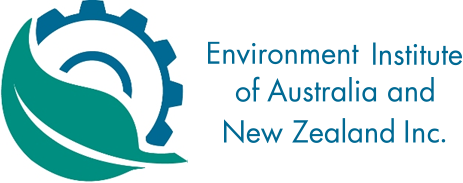-
Member Login
- Home
- About
- Institute Groups
- Australian Divisions
- New Zealand Chapter
- Special Interest Sections
- Communities of Practice
- Membership
- Events
- News & Publications
- Institute Programs
- Resources
- Jobs Board
- Contact Us
- Site Info
Jo Horsfall
Jo Horsfall
Abstract | A decision support framework for prioritising actions to mitigate wildlife-vehicle collisions
Direct mortality from collisions with vehicles is one of the most significant impacts of human development on wildlife. Though a comprehensive toolkit for wildlife-vehicle collision mitigation exists, decision-makers often lack the necessary information to guide choices among management options.
Using a decision science approach, competing actions can be prioritised based on their cost-effectiveness. This study presents a decision support framework for prioritising wildlife-vehicle collision mitigation actions, spatially and for multiple species, that maximise the conservation benefits generated per dollar invested, and in which taxa can be alternately weighted to support different conservation objectives.
A project prioritisation protocol was followed to address three distinct conservation objectives within the study area of Redland City, south-east Queensland, Australia. Existing records of wildlife-vehicle collisions were used to identify target fauna and candidate sites for mitigation, and the effectiveness of five mitigation structures across affected taxa groups was quantified through expert elicitation.
The costs and benefits of installing any mitigation structure at a candidate site were compared and structure-site combinations ranked in order of cost-effectiveness for each objective function. The framework, though simplistic, was effective in demonstrating how cost-effectiveness criteria can be employed to prioritise road mitigation actions, spatially and for multiple species, to address conservation objectives.
The actions selected for implementation using each objective function were effective in addressing their corresponding conservation objectives. The sets of actions selected for implementation were very similar across the three objective functions, however, because of the constraints upon implementing most of the structures under consideration on local roads.
The incompatibility of most of the mitigation structures with local roads demonstrated that road mitigation in residential areas is a unique challenge that may benefit from the development of solutions that are less constrained by local road infrastructure.
Bio | Jo Horsfall
 Jo is a recent graduate of the Master of Conservation Science program at The University of Queensland. As a wildlife rescue volunteer, she became interested in exploring strategies to reduce the number of wildlife-vehicle collisions in her hometown of Redland City in the ‘Koala Coast’. A member of the Rhodes Conservation Lab, for her thesis she developed a decision support tool for prioritising road mitigation projects, spatially and for multiple species, within a management region. Joanna has a professional background in teaching and greatly values the role of education in reducing human-wildlife conflicts. She is currently based at the Koala Research Centre in Brisbane - a joint initiative of Lone Pine Koala Sanctuary and Brisbane City Council focusing on koala conservation in urban environments.
Jo is a recent graduate of the Master of Conservation Science program at The University of Queensland. As a wildlife rescue volunteer, she became interested in exploring strategies to reduce the number of wildlife-vehicle collisions in her hometown of Redland City in the ‘Koala Coast’. A member of the Rhodes Conservation Lab, for her thesis she developed a decision support tool for prioritising road mitigation projects, spatially and for multiple species, within a management region. Joanna has a professional background in teaching and greatly values the role of education in reducing human-wildlife conflicts. She is currently based at the Koala Research Centre in Brisbane - a joint initiative of Lone Pine Koala Sanctuary and Brisbane City Council focusing on koala conservation in urban environments.
We acknowledge and value the rights and interests of Indigenous Peoples in the protection and management of environmental values through their involvement in decisions and processes, and the application of traditional Indigenous knowledge.

